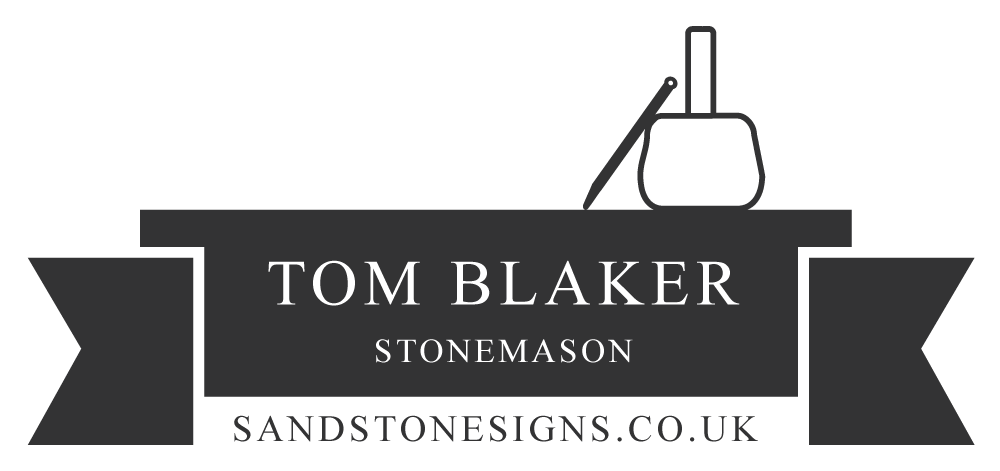Stone signs are commonly made by sandblasting through a template, which create rough edged letters with rounded internals lacking the finesse of the V-cut or the relief character. Tom only carves his signs by hand, using a dummy mallet, a larger nylon mallet and a set of tungsten carbide tipped chisels, and here are the two techniques he uses.
V – incised Letter Carving
This method of stone carving was pioneered by Roman masons. A scribe would first draw out the text on the stone with a sharp tool and then the mason would chisel out the lettering. Starting at the centre of each character, the chisel gradually deepens and widens the channel in the stone to create a V shaped cut, hence the name. As light falls across the cut it creates a shadow whilst the other side on the stone is illuminated. Part of the beauty of V-cut lettering is how the depth of the V changes in relation to the width of the line. Letters carved in this manner can be painted or left bare. However, freshly cut unpainted letters are not always clear in certain light conditions.
Relief Carved Signs
Lettering carved in relief stands out from the panel of stone. This style was very popular during the Victorian period, often featured on grand civic stone buildings. It is a more sculptural approach and the letters become 3 dimensional objects. Signs carved in relief are usually contained within a border, and have either a smooth or henpecked textured background. This method is more expensive than V-incised carving as there is much more work involved, but the finished result is worth it.
Questions?
If you need any advice please don’t hesitate to get in touch, we’ll be happy to help. Please fill in an enquiry form or contact the workshop directly for a quotation or advice.

